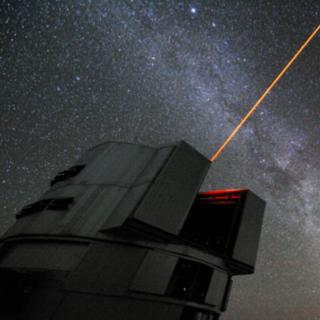Bibcode
Hasselquist, Sten; Hayes, Christian R.; Lian, Jianhui; Weinberg, David H.; Zasowski, Gail; Horta, Danny; Beaton, Rachael; Feuillet, Diane K.; Garro, Elisa R.; Gallart, Carme; Smith, Verne V.; Holtzman, Jon A.; Minniti, Dante; Lacerna, Ivan; Shetrone, Matthew; Jönsson, Henrik; Cioni, Maria-Rosa L.; Fillingham, Sean P.; Cunha, Katia; O'Connell, Robert; Fernández-Trincado, José G.; Muñoz, Ricardo R.; Schiavon, Ricardo; Almeida, Andres; Anguiano, Borja; Beers, Timothy C.; Bizyaev, Dmitry; Brownstein, Joel R.; Cohen, Roger E.; Frinchaboy, Peter; García-Hernández, D. A.; Geisler, Doug; Lane, Richard R.; Majewski, Steven R.; Nidever, David L.; Nitschelm, Christian; Povick, Joshua; Price-Whelan, Adrian; Roman-Lopes, Alexandre; Rosado, Margarita; Sobeck, Jennifer; Stringfellow, Guy; Valenzuela, Octavio; Villanova, Sandro; Vincenzo, Fiorenzo
Referencia bibliográfica
The Astrophysical Journal
Fecha de publicación:
12
2021
Revista
Número de citas
145
Número de citas referidas
128
Descripción
The SDSS-IV Apache Point Observatory Galactic Evolution Experiment (APOGEE) survey has obtained high-resolution spectra for thousands of red giant stars distributed among the massive satellite galaxies of the Milky Way (MW): the Large and Small Magellanic Clouds (LMC/SMC), the Sagittarius Dwarf Galaxy (Sgr), Fornax (Fnx), and the now fully disrupted Gaia Sausage/Enceladus (GSE) system. We present and analyze the APOGEE chemical abundance patterns of each galaxy to draw robust conclusions about their star formation histories, by quantifying the relative abundance trends of multiple elements (C, N, O, Mg, Al, Si, Ca, Fe, Ni, and Ce), as well as by fitting chemical evolution models to the [α/Fe]-[Fe/H] abundance plane for each galaxy. Results show that the chemical signatures of the starburst in the Magellanic Clouds (MCs) observed by Nidever et al. in the α-element abundances extend to C+N, Al, and Ni, with the major burst in the SMC occurring some 3-4 Gyr before the burst in the LMC. We find that Sgr and Fnx also exhibit chemical abundance patterns suggestive of secondary star formation epochs, but these events were weaker and earlier (~5-7 Gyr ago) than those observed in the MCs. There is no chemical evidence of a second starburst in GSE, but this galaxy shows the strongest initial star formation as compared to the other four galaxies. All dwarf galaxies had greater relative contributions of AGB stars to their enrichment than the MW. Comparing and contrasting these chemical patterns highlight the importance of galaxy environment on its chemical evolution.
Proyectos relacionados

Evolución Galáctica en el Grupo Local
La formación y evolución de galaxias es un problema fundamental en Astrofísica. Su estudio requiere “viajar atrás en el tiempo”, para lo cual hay dos enfoques complementarios. El mas extendido consiste en analizar las propiedades de las galaxias a diferentes distancias cosmológicas. Nuestro equipo se concentra en el otro enfoque, denominado
Emma
Fernández Alvar